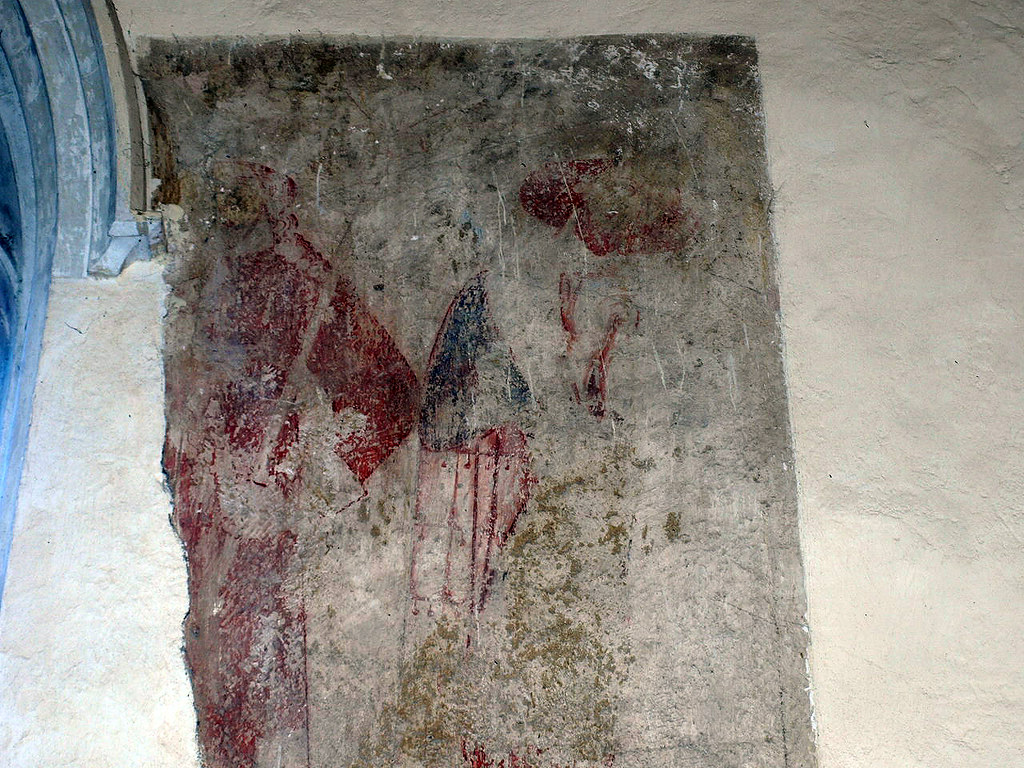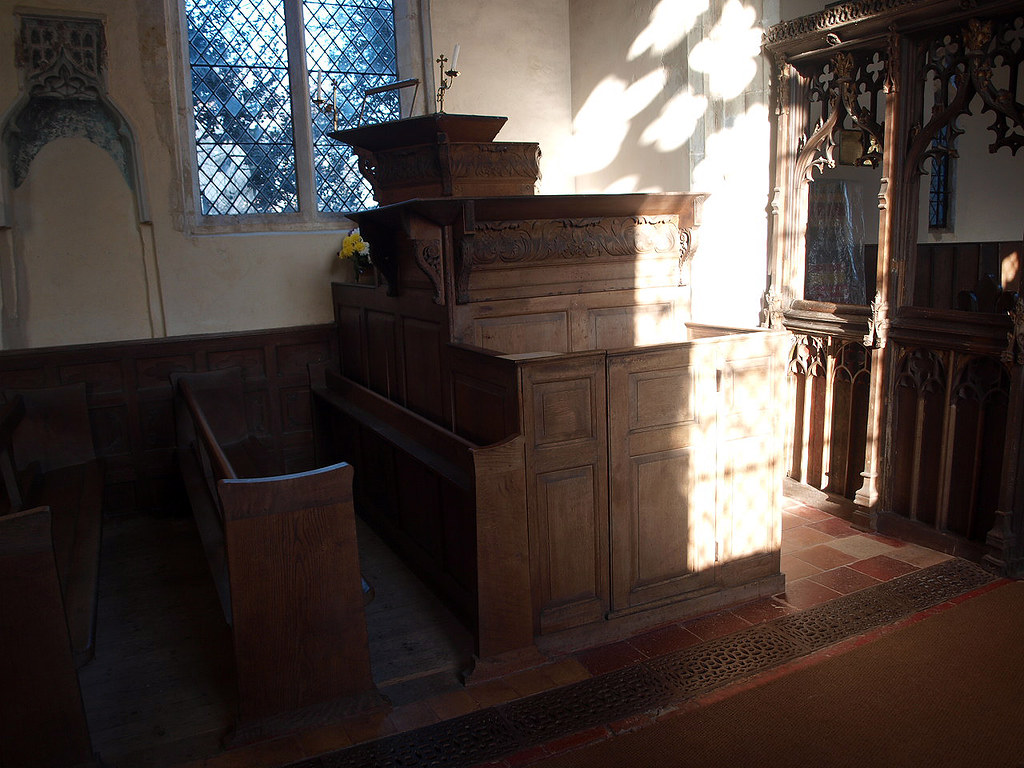ST PETER. The W tower stands only to roof-height. Above that a weatherboarded top with pyramid roof. The stone parts are Dec, see the W window and the tower arch. Dec also the chancel in its present form, though blocked lancet windows tell of an earlier, C1I3, state. Dec E window of three lights. Four-centred arch. The tracery consists of arch-heads upon the three arch-heads of the lights and in the two main shapes thus produced two small cusped reticulation motifs one below the other. Inside, niches l. and r. of the window. The nave windows are Dec too, though the simple N doorway seems to be of c. 1200. A large niche inside, in the N wall, Perp. Also the outline of a Perp Easter Sepulchre in the chancel N wall. The chancel roof has beautifully carved broad wall-plates with various leaf and tracery patterns. - FONT. Octagonal, Perp, with tracery patterns. - PULPIT. A three-decker of the rare date c. 1700; with acanthus foliage. - BENCHES. One end with elaborate tracery. Three later ones with very coarse, under-developed poppy-heads. One of them is dated 1601. - SCREEN. With broad one-light divisions and ogee tops. - COMMUNION RAIL. Three-sided. Very thin, twisted balusters; Georgian. - WALL PAINTING. Two standing C14 figures, perhaps part of the story of the Three Quick and the Three Dead (nave N wall). Also a Noli me tangere, much faded (nave S wall), and some scroll-work (chancel S wall). - PLATE. Paten c. 1690 ; Cup 1809 ; Almsdish 1823.
GREAT LIVERMERE. It has all the charm of the cottages Suffolk delights in, peeps of a park, and a thatched church which preserves a scratch dial which told the village the time in the days before clocks. The 700-year-old chancel is oldest of all; the chancel arch was made by the 14th century men who built the tower with its odd cap of grey tiles showing just above the nave. The font is 14th century and the porch 15th. On the walls are traces of old paint. By the altar are two canopied niches. There is a 500-year-old screen, and we found here a great rarity, a box-pew with two piscinas in it. The chancel roof is finely carved, but the best possession is the attractive three-decker pulpit, rich with foliage and standing near a vaulted recess in the wall.



No comments:
Post a Comment